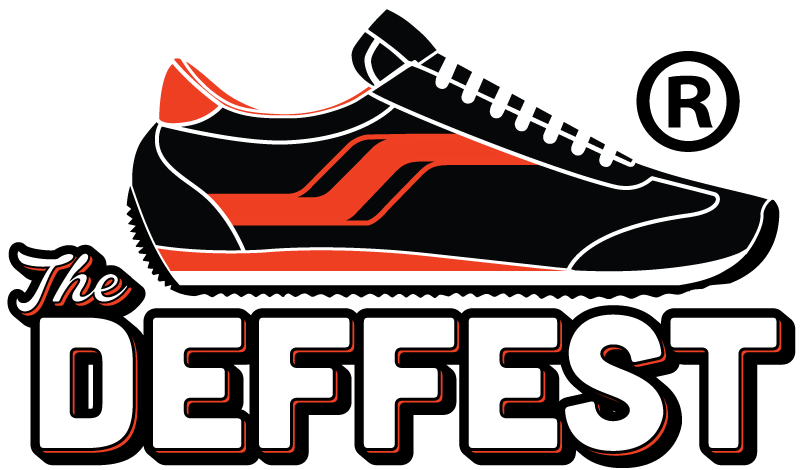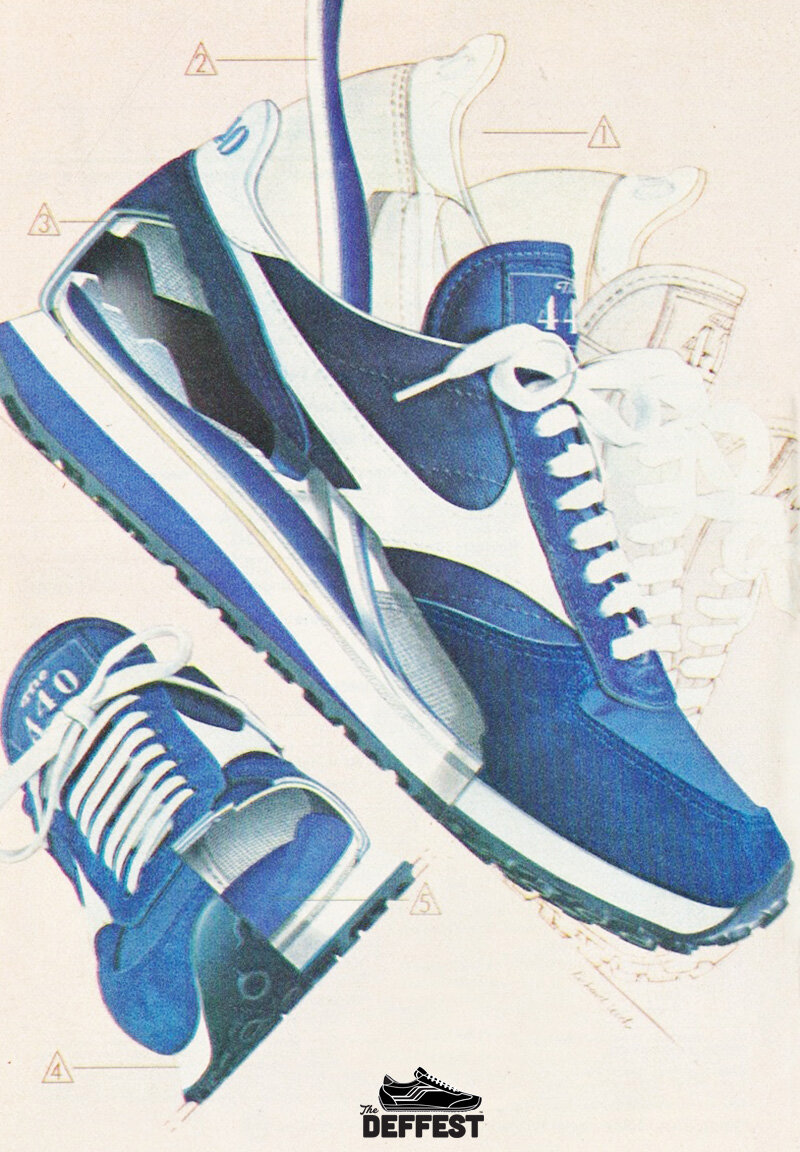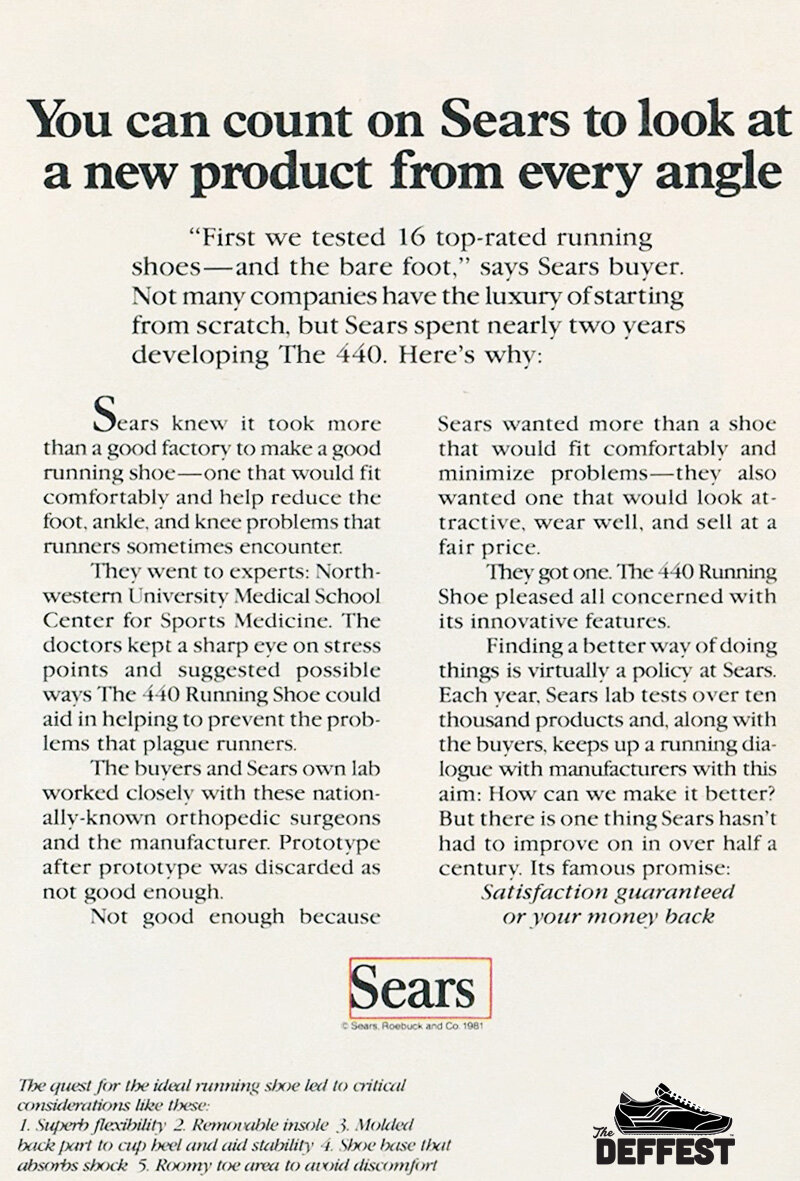Here's a 1981 vintage sneaker ad for the Sears 440 running shoes. The 440 was likely named for the 440-yard dash which is a quarter-mile sprint race in track and field. Between these sneakers and "The Winner" II series Sears made some pretty alright sneakers back in the day.
Ad info is below:
You can count on Sears to look at a new product from every angle
"First we tested 16 top-rated running shoes—and the bare foot," says Sears buyer. Not many companies have the luxury of starting from scratch, but Sears spent nearly two years developing The 440. Here's why:
Sears knew it took more than a good factory to make a good running shoe—one that would fit comfortably and help reduce the foot, ankle, and knee problems that runners sometimes encounter.
They went to experts: Northwestern University Medical School Center for Sports Medicine. The doctors kept a sharp eye on stress points and suggested possible ways The 440 Running Shoe could aid in helping to prevent the problems that plague runners. The buyers and Sears own lab worked closely with these nationally-known orthopedic surgeons and the manufacturer. Prototype after prototype was discarded as not good enough.
Not good enough because Sears wanted more than a shoe that would fit comfortably and minimize problems—they also wanted one that would look attractive, wear well, and sell at a fair price. They got one. The 440 Running Shoe pleased all concerned with its innovative features.
Finding a better way of doing things is virtually a policy at Sears. Each year, Sears lab tests over ten thousand products and, along with the buyers, keeps up a running dialogue with manufacturers with this aim: How can we make it better? But there is one thing Sears hasn't had to improve on in over half a century. Its famous promise: Satisfaction guaranteed or your money back
Sears
Sean Roebuck and Co. 1981
The quest for the ideal running shoe led to critical considerations like these:
1. Superb flexibility 2. Removable insole 3. Molded back part to cup heel and aid stability 4. Shoe base that absorbs shock 5. Roomy toe area to avoid discomfort.


